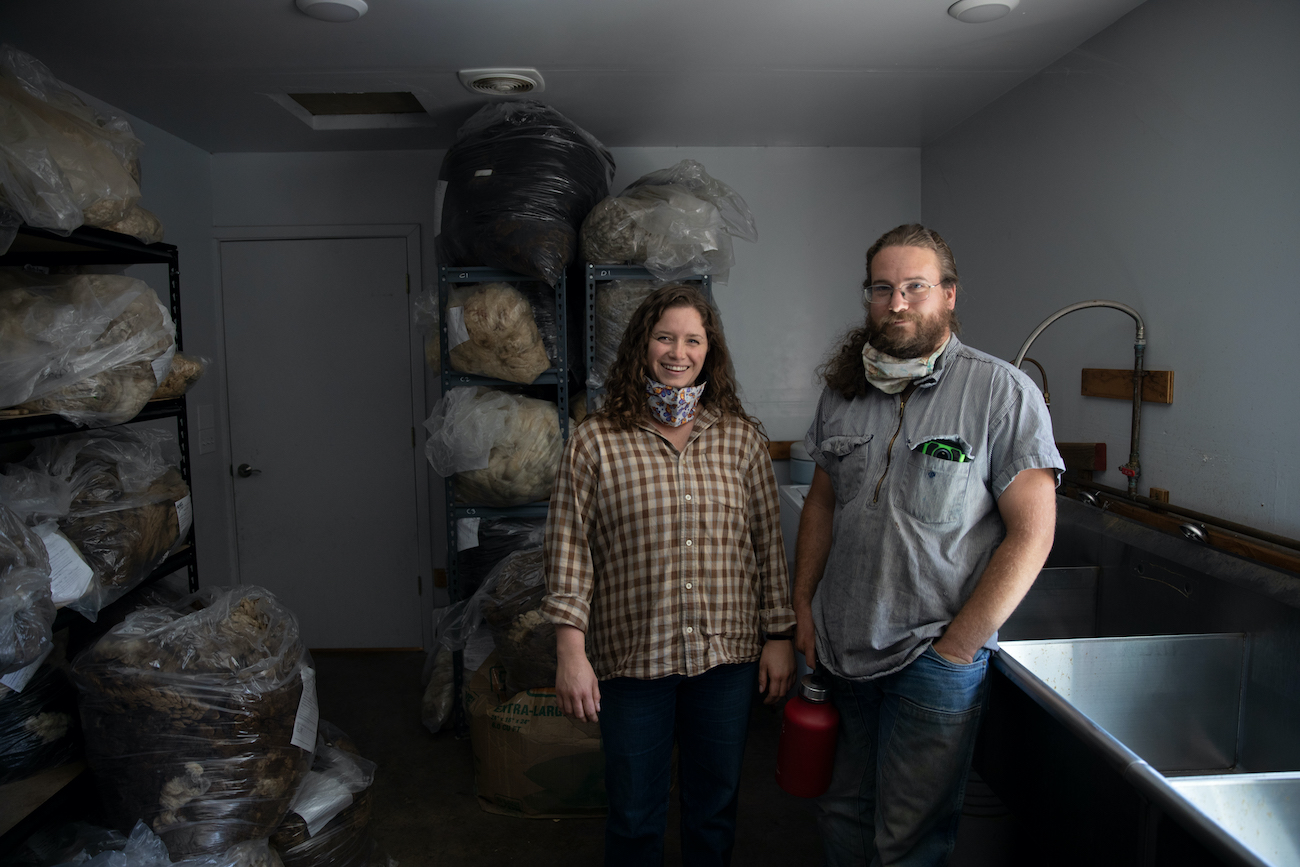Connecting the Dots in the Life Cycle of Clothing and Material Culture
When it comes to building regional and regenerative fiber systems, every step along the supply chain carries value. This truth came into even starker focus for the world when the realities of the pandemic laid bare the fragility of our supply chains. The disruptions caused by the pandemic highlighted the need to regionalize our textile systems. In doing so, we can develop circular economies that support workers, eliminate waste, regenerate nature, and circulate products at their highest value.
This article highlights a critical part of the fiber supply chain: the fiber processors that operate mills. Situated between the producers growing raw natural fibers and the artisans and designers crafting textiles, fiber mills add life to a product. As an intermediary, mill owners and operators get to experience numerous aspects of the life cycle of fibers and textiles. A true labor of love, their work requires a deep understanding of natural fibers’ properties — from sheep’s wool to alpaca to cotton and flax — to create customized products of the highest quality.
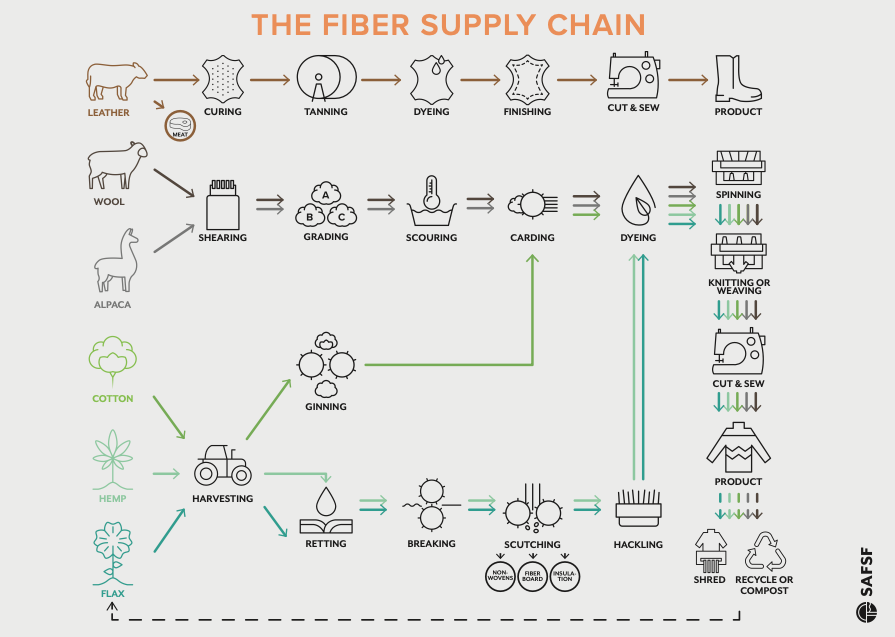
The History of Fiber Processing
Over the years, the prevalence of textile mills has declined across the United States. A shrinking domestic apparel manufacturing industry coupled with increased outsourcing to find cheaper, typically exploited, labor overseas contributed to the decline. It is a pattern that follows the history of America’s economic system. We must recognize how our country’s wealth and financial system is founded on present and historical injustices intimately tied to the fiber industry. As Americans are rethinking their consumption behaviors and community-minded mills are beginning to return, a movement is building that localizes the production of fiber products and elevates the principles of regenerative systems. Historically, fiber mills were community anchors and employment hubs. Looking to the future, fiber mills can serve as key components of regional supply chains and circular economies.
Fibershed has worked on cataloging textile mills across the United States to illuminate local fiber milling capacity. This searchable inventory of fiber and textile mills can be used by people seeking local and regional milling options. (You can add your local mill by filling out our survey!).
In addition to creating a national inventory of fiber and textile mills, Fibershed is working to understand how to fill the gaps for natural fiber to go from field to closet. This research is summarized in our blog post, 3 Maps Show How We Can Unlock Local Clothing Industries. Through analyzing manufacturing databases and conducting dozens of interviews, Fibershed mapped the current footprint and capabilities of existing enterprises and their plans to expand. This investigation revealed how gaps in regional infrastructure affect existing enterprises and create a reliance on global processors. Fibershed continues to support and explore possibilities for expanding textile processing from a regional standpoint through the Regional Fiber Manufacturing Initiative.
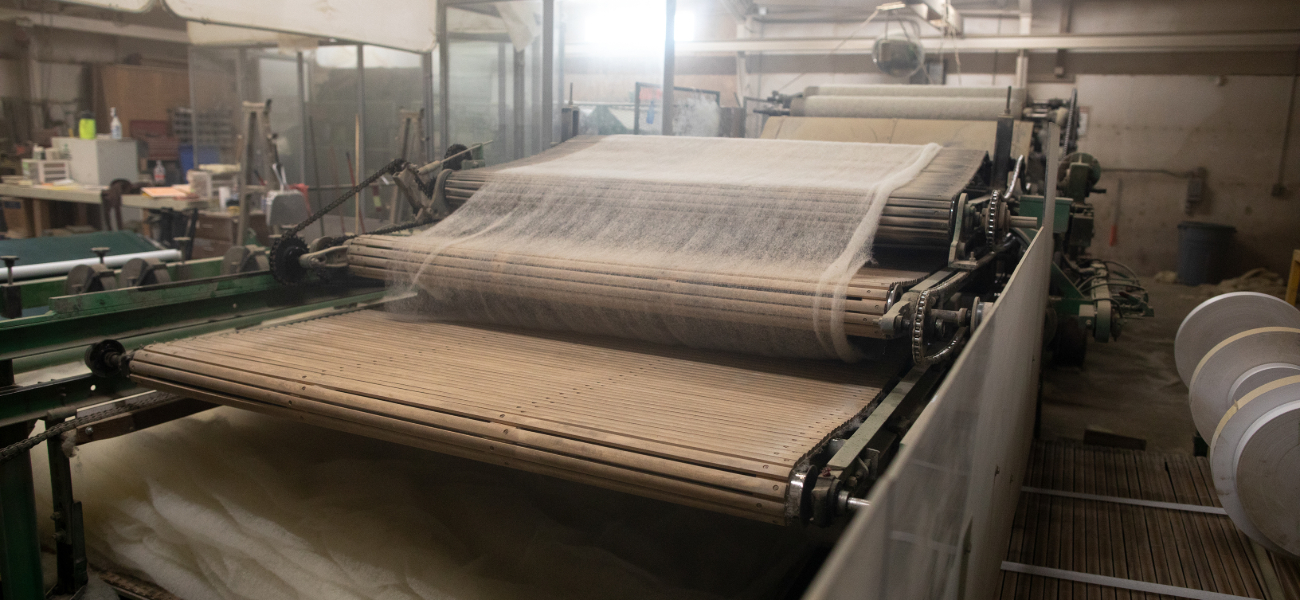
The five mills featured in this article demonstrate how regional fiber mills can be assets to the community that they are embedded in and to the regional economy. Explore the mills below that are focused on the circular use of natural textiles whose production regenerates land and creates meaningful and equitable livelihoods.
Five Fiber Processing Mills Working To Change the Industry
Valley Oak Wool & Fiber Mill
Woodland, California
“At the beginning, Marcail recalls hearing people’s perceptions that millwork was just factory work with comments like: “I thought people went to college so they didn’t have to work in a place like this.” While that may be the case for large mills with multiple employees doing single tasks repeatedly, it wasn’t so at Yolo Wool Mill. Says Marcail of her time there, “little by little you’d pick up other skills’ ‘ as the job shifted between different machines, doing customized work. Now that it’s Valley Oak Wool Mill and a one-woman operation, Marcail is hardly in a monotonous factory setting. Her customers have been a steady flow since reopening the mill in November of 2017. They are a combination of new and returning livestock producers who own small flocks mostly around Napa, Sonoma, and Petaluma. With half of them new to processing, Marcail is not only running the mill but also helping educate producers about wool production. The days can fluctuate between answering customers’ questions, managing workflow, billing, and doing machine maintenance. There is work to be done, so she does the work. But it’s more than just that. Marcail’s passionate investment in the fiber, the mill, and the many people who now look to her to process wool, are revealed in the anecdotes she shares about flock owners and the way she seems to recognize each fleece.”
Learn more about Valley Oak Wool and Fiber Mill
Mendocino Wool and Fiber Inc.
Ukiah, California
“Sarah and Matthew Gilbert are not just running a mill. They are part and parcel of the creation of a new regional supply network. A piece of the cultural transition from brutally efficient, often exploitative global supply chains to local, smaller operations that focus on processing locally grown materials provide fair wages and contend with higher operating costs. This means the Gilberts are asked to bring the totality of their years of experience and fiber skills to bear. Matthew’s shearing background provides knowledge of seasonal conditions, animal health considerations, and deep knowledge of which plants grow, when, in what regions, and can contaminate fleeces. Sarah’s wool evaluation and classing lend an understanding of the strength, length, crimp, fineness, and suitability of raw material for its end product; raw fleece skirting and preparation improves efficiency throughout the milling process; and extensive technical skill in yarn design creates a high-quality product.”
Learn more about Mendocino Wool and Fiber Inc.
Frankenmuth Woolen Mill
Frankenmuth, Michigan
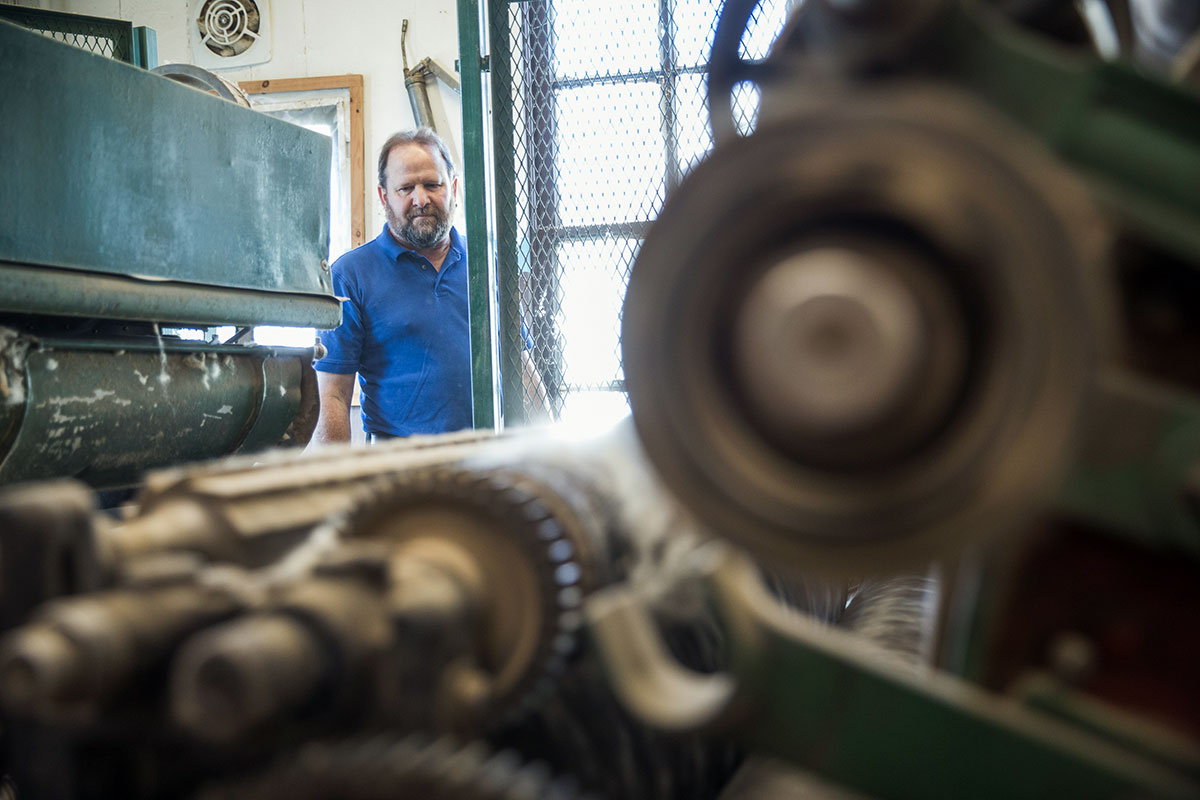
“While many companies don’t question the practices employed by farms or source cheap materials from overseas, Abby and Matt have proudly kept their wool homegrown. And they haven’t stopped there. They’ve become one of several trailblazers for Fibershed’s new designation of wool altogether: Climate Beneficial Wool.
‘We believe it is important to be transparent and healthy,’ says Matt. ‘It’s the ethical choice. By aligning ourselves with farms that follow a Carbon Farm Plan for their land, we’re protecting the environment and ensuring the sheep are treated right. And by farming in this conscious way, the raising and shearing of the sheep essentially leaves a negative carbon footprint. The ranch sequesters more carbon than it emits. It’s more expensive, but we’re committed to bringing this environmentally-conscious sensibility to everything we create.’”
Learn more about Frankenmuth Woolen Mill
Woolgatherer Carding Mill
Montague, California
“The Woolgatherer Carding Mill is a business with a 30-year history of utilizing older, slower, and more sustainable methods of production, supporting a future that is less wasteful, less toxic and more lasting. Wool bedding is naturally fire-retardant, does not use chemicals, can last for decades, and is naturally-sourced and made by local people. A high quality, mission-driven product may take a little more time to make, but allows us to wrap ourselves in old-world, earth-centered values.”
Read more about Woolgatherer Carding Mill
Huston Textile Company
Rancho Cordova, California
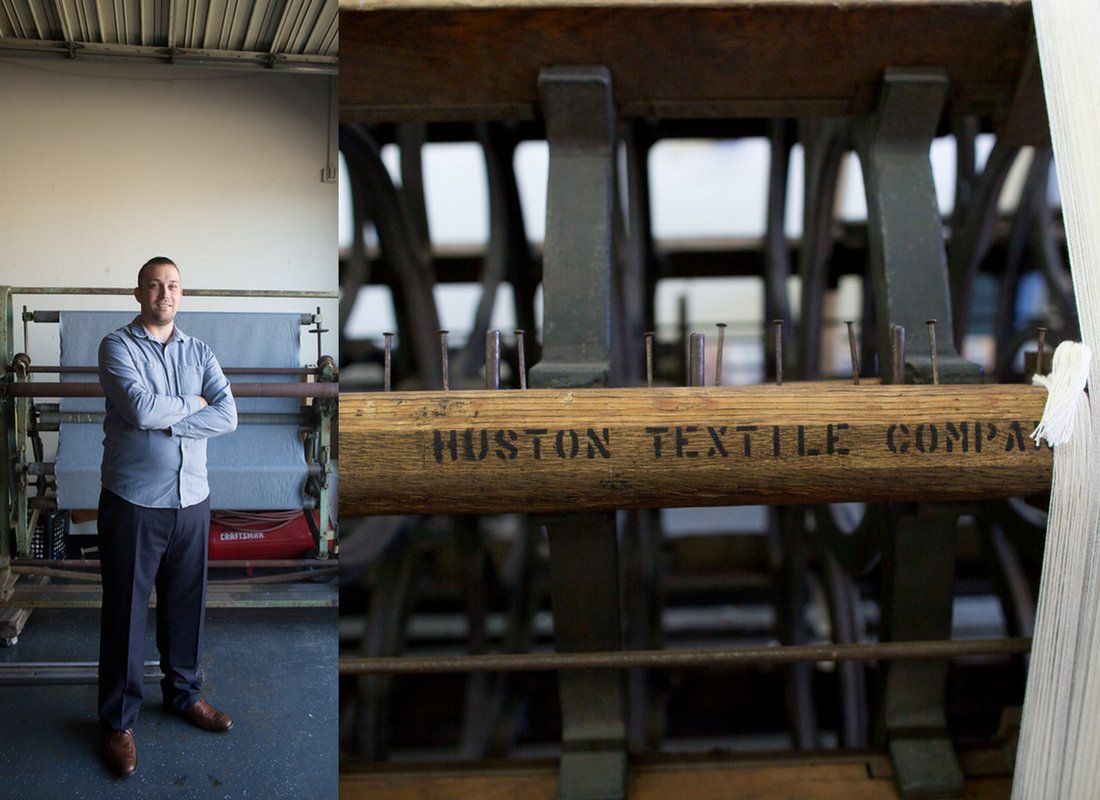
“Marrying textiles and machinery seemed like a natural fit for Huston. His mother, a seamstress with a degree in Fashion Design and Merchandising, showed him how to sew at an early age and he has “always been interested in old American machinery.” When asked why he chose textiles, he replied, ‘There are a lot more uses with textile machinery. There’s something with making fabric that is not known – there are a lot of variables in it that you can’t really anticipate. Textiles, especially weaving, is an art where you have to know the end, work your way backwards, and then do it. You can’t make it up as you go. It has to really be thought out and planned. There’s enough variance in it to make it interesting.’”
Read more about Huston Textile Company
Help us expand our National Mill Inventory — add your local mill to the map.
Please note that this is a collection of stories from over the years and may not represent the current and new initiatives at these mills. If you would like to learn more about a particular producer’s feature, please get in touch!
All images by Paige Green unless otherwise noted.


